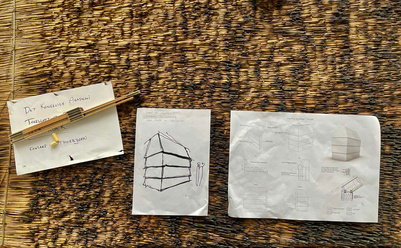Groundbreaking new Danish research shows that a frequently used preservation method may damage oil paintings – including some of the world’s great masterpieces.

If an oil painting treated with the frequently used wax-resin lining is exposed to relative humidity above 60 per cent, there is a serious risk that it will shrink – and the paint will be compressed. A thesis defended this week at the Royal Danish Academy of Fine Arts School of Conservation shows that a method used on many masterpieces – including Rembrandt, van Gogh and the Danish Golden Age paintings – in some cases does a lot more harm than good.
During much of the 20th century, conservators used this so-called ‘lining’ technique to protect the masterpieces in the national collections. They attached a piece of canvas to the rear of the painting against the negative influences of excessive moisture fluctuations by using a mixture of wax and resin. The technique was particularly used in the 1960s to protect paintings during transit and on loans for exhibitions. Since the most important paintings are often the ones that travel the most, they were typically wax-resin lined.
In her PhD thesis “Lined canvas paintings: Mechanical properties and structural response to fluctuating relative humidity, exemplified by the collection of Danish Golden Age paintings at Statens Museum for Kunst (SMK)”, Cecil Krarup Andersen has examined the difference in moisture sensibility before and after wax-resin lining. If the relative humidity in the ambient air rises to a level above 60 percent, the consequences are dramatic. The canvas shrinks and the risk is that layers of paint will flake off.
”The wax-resin method has not been used since the 1970’s. At that time it was discovered that the method i.e. darkened the colours of the paintings. But the vulnerability to climate conditions is a new factor and it is quite shocking to us,” Cecil Krarup Andersen says.
Marion Mecklenburg, Senior Researcher at the Smithsonian Institution and supervisor on the thesis, states: “What she has done is a magnificent work. It is so unusual that research gives such clear results with no questions. The real message here is that it is altering the perception of what we think has happened in terms of conservation.”
Museums generally require an approximate relative humidity of 50 per cent. But in case of malfunctioning climate control, flooding or if the works are lent to museums which do not take the same precautions, the paintings may be very vulnerable. This is also the case in private collections or in castles or churches where there may be no climate control at all.
Cecil Krarup Andersen’s scientific results have attracted international attention, and they are now in considerable demand. It is already clear that her research will have a huge impact on the world’s art, museums and cultural heritage.





